Member postings for Dr_GMJN
Here is a list of all the postings Dr_GMJN has made in our forums. Click on a thread name to jump to the thread.
| Thread: Stuart 10V Build Log - Complete Beginner... |
| 12/08/2023 16:48:50 |
Almost a year later, and I was back in Hamburg. I had another look at the ship engine, and noticed this plate: |
| Thread: Stuart Twin Victoria (Princess Royal) Mill Engine |
| 15/07/2023 16:35:58 |
Got the taper pins and reamer. Then, while figuring out how to hold the forks and shaft for drilling, found an issue: For some reason years ago I changed the four hole offsets for the slide bars to be further out. I think I might have done this becasue as drawn, the round mounting pillars overhang the inner base walls a bit, and moving the holes makes them look much better. |
| 15/07/2023 13:58:35 |
OK this is the best compromise I can make for a symmetrical fish-bellied rod. No blend filing shown. It's a 3 degree overall taper at each end (topslide set to 1.5 degrees). |
| 14/07/2023 20:05:00 |
Sorry Jason I don’t fully understand: If I start at a shoulder and feed in with a button tool, I’m simultaneously reducing diameter and shortening the rectangular bit. Aren’t the chances of hitting the line, and the correct diameter at the same time pretty slim? Ive CADed up a fish bellied design, and made the lengths to the blend centres equal. Why would the diameters be different at each end? After all, I’m defining them as the same. The blocks are different sizes, but the blends run into and out of them however they need to. |
| 14/07/2023 17:54:02 |
Posted by JasonB on 14/07/2023 16:36:34:
Whatever radius you use it should not end up concave (undercut) as you feed in with the cross slide which is 90deg across the lathe Yes I guess so. TBH I’m still puzzling over how to get length and diameter both correct and equal on both rods. The tapers have no straight line definition of where the radius runs out. If I turn to the right small diameter, but the length is wrong, I’d then have to move along into the ends (potentially giving the concave geometry, then out sideways to get rid of that, but that would then change the radius run-out length on the blocks. Im thinking find the centre of the rod by measuring from one end, then turn the whole circular length to the maximum central O/D, then mark the beginning of the taper onto an area of felt-tipped pen, set the topslide to the correct angle and turn up to the marked lines, then set topslide extension (hoping that by the ends, everything is right and runs out to the blocks. All that would rely on setting lengths to the drawing, and hoping I can accurately set the topslide to a very specific angle. |
| 14/07/2023 16:31:51 |
Hmm it looks like a 4mm radius at the ends is a minimum in order to get a nice blend without the corners of the bosses being slightly concave with pointy corners (I want the blends to run out over all four faces of each end rather the being a small fillet against rectangular faces. |
| 13/07/2023 15:09:13 |
Thanks Jason. The PR drawings call for a 5/32" radius at each end (about 3.97mm). Yes, the drawings show a straight-taper rod, but I would like to change this to a fish bellied type, as per Ramon's model. |
| 13/07/2023 13:09:47 |
Thanks Jason, yes I saw the links now. So as far as I can see the procedure would be: 1) Mill my square stock to the rectangular section of the largest end (the stock I have is oversized). 2) Cut to overall length + c.10mm on each end. 3) Put in 4-jaw, centre drill one end, and extend it out of the chuck to be supported by the tailstock. 4) Mark out the ends of the radii at each end of the round section. Not sure from here, because I can't figure out how to simultaneously turn the end blend radii to be the right diameter and to the right run-out length at the rectangular bosses. I can't turn to diameter first, because if it ends up being too far away from the end, I'll have a parallel section rather than a taper blending to a radius. I'm going to get an 8mm diameter button tool for the radii, because I like the look of a larger radius there. Thanks.
|
| 12/07/2023 22:35:44 |
I like the idea of fish-bellied rods rather than straight-tapered, so hopefully I’ll end up with something like Ramon’s engine. Id like to stick with machined from solid, but where do you fit the carrier if machining between centres? Do you clamp the carrier around the faceplate end, and constantly swap the workpiece as you turn the tapers, hopefully not damaging anything? Presumably the tapers are done by re-setting the topslide rather than offsetting the tailstock? Is it a question of marking the start and end of the tapers with a marker and working to scribed lines, then swapping the ends and repeating the cuts? I think I’ll use the parallel middle and two angled cut method (5 facets in total per rod) then smooth them. I will have to do a drawing to get the marking out right. Thanks.
|
| 11/07/2023 11:24:28 |
Posted by Ramon Wilson on 11/07/2023 07:42:03:
Hi Doc, I'm sure Jason will provide you with a good method to follow but for what it's worth I described making fish bellied rods on HMEM when making them for the Waller engine.
As you can see they are composite which makes for much easier machining - you can find the details here post #16 onwards (The description of making them is further on at the start of the second page of the thread) Here's an image of the pair I made for my twin Vic using the same method. These ran at many shows over many years without showing any signs of their composite make up. The big end 'blade' was an integral part of the shaft.
Good to see you making progress - none at this end I'm afraid
Best - R Edited By Ramon Wilson on 11/07/2023 07:45:23 Edited By Ramon Wilson on 11/07/2023 07:57:28
Thanks Ramon. Glad to see you posting here again. |
| 11/07/2023 11:23:56 |
Posted by JasonB on 11/07/2023 06:48:55:
Which radii are you talking about I'll dig a post of mine out later for the bellies The end radii of the circular section rods, where then run out into the rectangular ends. |
| 10/07/2023 22:26:16 |
I might have a go at the connecting rods next. I guess I have no choice but to make a tool for turning the end radii. I seem to remember some talk about fish bellied rods being more accurate than the plan versions, but can’t find it in the thread. There was some mention about the machining method bring wrong (which I did find), but no mention of the profile. Maybe the plan is ok after all? |
| 09/07/2023 19:06:05 |
Posted by Bruce Voelkerding on 09/07/2023 14:01:34:
Dr_GMJn Taper Pins are made to 1/4" per foot taper on the DIAMETER - not the Radius as you queried on 7/7/23. 1/4" per 12" is 1:48 on Diameter, 1:96 on Radius. Note METRIC Taper Pins are 1:50 taper. When I use Filing Buttons in the Case shown above, I would make the Pivot Pin about .016" longer than the Sum of the thicknesses of the Part plus the 2 Rollers. I would put .008 x 45 deg Chamfers on both Ends - no Threads. Instead of the Nuts, clamp the assembled Parts in the Bench Vice (I have replaced all the serrated Jaw Inserts in my Bench Vices with smooth Brass Replacements). Note at this Stage the Part and the Rollers are free to rotate independently. I install a Screw in the Part to control its Position and I file until both Rollers rotate freely. It is satisfying to feel both the Rollers rotating - you know you are at Size and have not damaged the Roller Diameters. The Rollers are used unhardened and will last "forever". OK thanks, I’ll re-calculate and amend my drawing. I’d assumed the 1:48 taper was along one side only (in plan/elevation view). I did leave my in-hardened buttons loose, but the jammed occasionally during flatting, hence the damage. I think the forks look ok overall though. |
| 09/07/2023 19:01:20 |
Thanks Jason, that worked ok, although they might need a bit more hand rounding to get them spot-on. The bosses aren’t too pronounced, but they have equalised the thicknesses of the three bits of fork. I won’t bother increasing the side chamfers, because I think they look ok as they are: Still got to ream them, and I need to get some taper pins and taper reamer ordered. I think now they look much more refined and match the rest of the engine a bit better. Edited By Dr_GMJN on 09/07/2023 19:02:34 |
| 09/07/2023 11:04:02 |
Posted by JasonB on 09/07/2023 06:53:58:
You were lucky with the brass, 4.7mm is a bit large for reaming 3/16" on that sort of size I tend to go 0.2mm smaller so 4.5mm or 4.6mm
Re. The face bosses - seems like there’s about 0.3mm excess on the faces compared with the cross-piece, so to make them equal I could machine them leaving the bosses raised. Question is, having filed the rounded ends, I guess I might end up with a step on the radiussed end. Less chance of the if I mill them on the R/T, but easier to setup in the 4-jaw and turn them. Also I’ve not got a milling cutter with a 0.3 tip radius, but I’ve got plenty of turning inserts with 0.2mm radii, which would make a nice fillet. Any thoughts? |
| 08/07/2023 21:16:08 |
Drilled the counterbores on the fork bosses: |
| 07/07/2023 19:20:42 |
Thanks both. Presumably the 1:48 taper angle is per side rather than overall? Should each end of the pin protrude slightly above the part? I drew out a 1/16” pin on the fork, and it looks like it would need quite a few diameters and depths drilling to minimise material removal. Should be OK though. |
| 06/07/2023 07:43:41 |
Posted by Dr_GMJN on 05/07/2023 21:44:06:
Thanks both, I think I’ll get a pin a screamer and do it that way then. I don’t have the plans to hand, but I’m wondering if I can use the same reamer for the crank pin bearing. Hmmm autocorrect! * taper pin and reamer. |
| 05/07/2023 21:44:06 |
Thanks both, I think I’ll get a pin a screamer and do it that way then. I don’t have the plans to hand, but I’m wondering if I can use the same reamer for the crank pin bearing. |
| 05/07/2023 20:12:25 |
Thanks both. The tool didn’t move in the collet, nor the workpiece in the vice. After it grabbed, and damaged the vice, I was able to continue with much smaller cut depths. The thing is, if you look carefully at the witness mark (which leads to the cut in the vice) it’s a significant depth and distance that the tool dragged itself along. Seems like a load of deflection must have occurred if that was the case. Re. the forked ends: I think I’ll go with rounding them, and some small chamfers on the boss and shoulders. I can’t make the raised cheek plates without thinning the forks, and I’d rather not do that. I understand if rounded, the locking bolt hole would be right on the tangent line and wouldn’t look great. Do the taper pins fit in parallel drilled or reamed holes? If I do this, are they drilled with the rods in place? My intention was to drill and ream the forks to 3/16” (as I did with the brass sliders). If this is the case, what’s the best way of holding the rod in place while doing these operations? Do the taper pins have nuts to draw them in (like on the connecting rod crank end adjustment)? If you just tap them in with a hammer and drift, is there a risk of damaging something on assembly (e.g. the slide bars), and how do you disassemble them? Thanks. |
Want the latest issue of Model Engineer or Model Engineers' Workshop? Use our magazine locator links to find your nearest stockist!
Sign up to our newsletter and get a free digital issue.
You can unsubscribe at anytime. View our privacy policy at www.mortons.co.uk/privacy
- hemingway ball turner
04/07/2025 14:40:26 - *Oct 2023: FORUM MIGRATION TIMELINE*
05/10/2023 07:57:11 - Making ER11 collet chuck
05/10/2023 07:56:24 - What did you do today? 2023
05/10/2023 07:25:01 - Orrery
05/10/2023 06:00:41 - Wera hand-tools
05/10/2023 05:47:07 - New member
05/10/2023 04:40:11 - Problems with external pot on at1 vfd
05/10/2023 00:06:32 - Drain plug
04/10/2023 23:36:17 - digi phase converter for 10 machines.....
04/10/2023 23:13:48 - More Latest Posts...
- View All Topics
- Reeves** - Rebuilt Royal Scot by Martin Evans
by John Broughton
£300.00 - BRITANNIA 5" GAUGE James Perrier
by Jon Seabright 1
£2,500.00 - Drill Grinder - for restoration
by Nigel Graham 2
£0.00 - WARCO WM18 MILLING MACHINE
by Alex Chudley
£1,200.00 - MYFORD SUPER 7 LATHE
by Alex Chudley
£2,000.00 - More "For Sale" Ads...
- D1-3 backplate
by Michael Horley
Price Not Specified - fixed steady for a Colchester bantam mark1 800
by George Jervis
Price Not Specified - lbsc pansy
by JACK SIDEBOTHAM
Price Not Specified - Pratt Burnerd multifit chuck key.
by Tim Riome
Price Not Specified - BANDSAW BLADE WELDER
by HUGH
Price Not Specified - More "Wanted" Ads...
Do you want to contact the Model Engineer and Model Engineers' Workshop team?
You can contact us by phone, mail or email about the magazines including becoming a contributor, submitting reader's letters or making queries about articles. You can also get in touch about this website, advertising or other general issues.
Click THIS LINK for full contact details.
For subscription issues please see THIS LINK.
Model Engineer Magazine
- Percival Marshall
- M.E. History
- LittleLEC
- M.E. Clock
ME Workshop
- An Adcock
- & Shipley
- Horizontal
- Mill
Subscribe Now
- Great savings
- Delivered to your door
Pre-order your copy!
- Delivered to your doorstep!
- Free UK delivery!
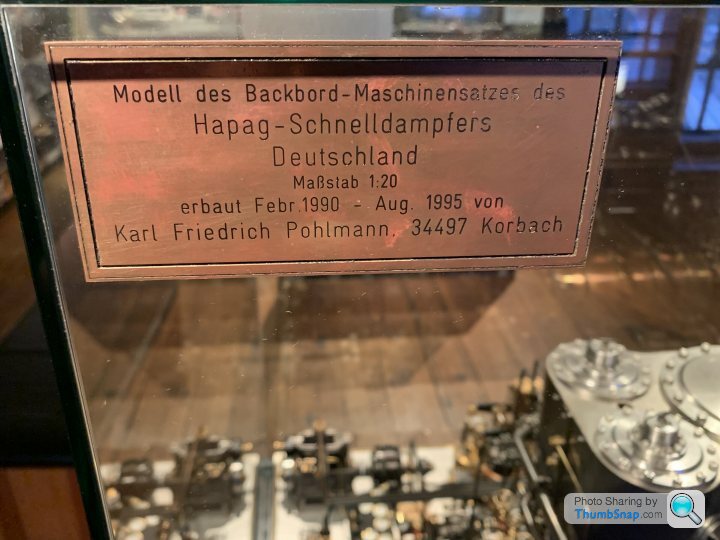
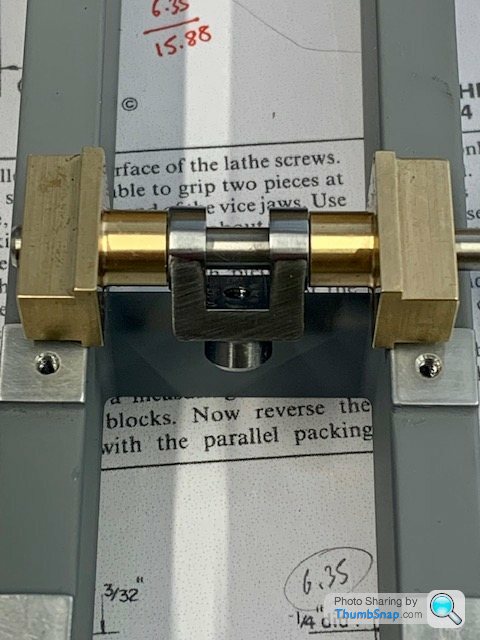
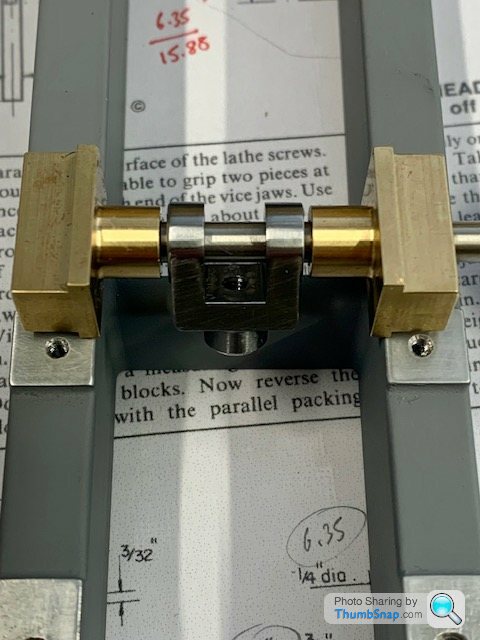
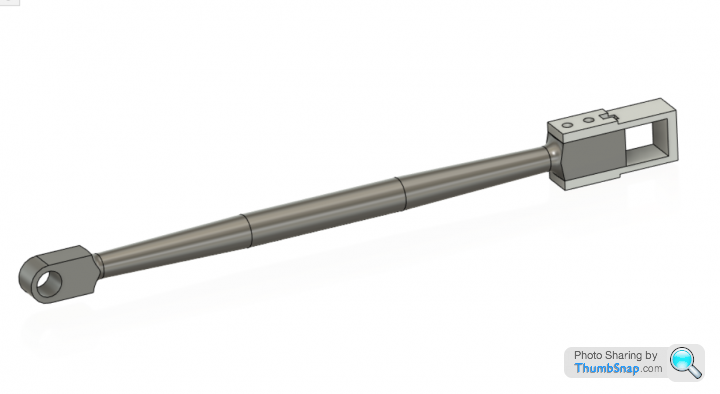
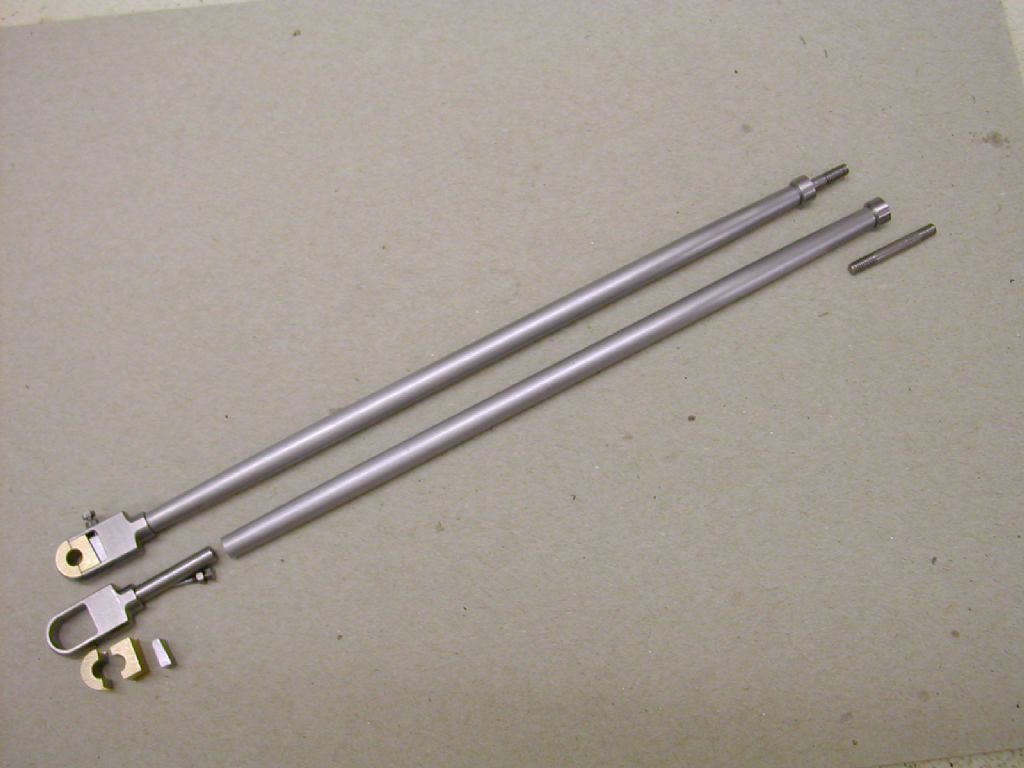

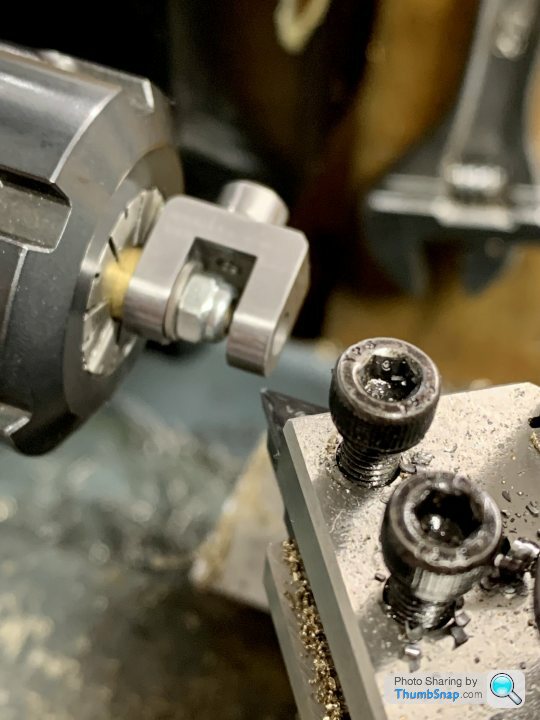
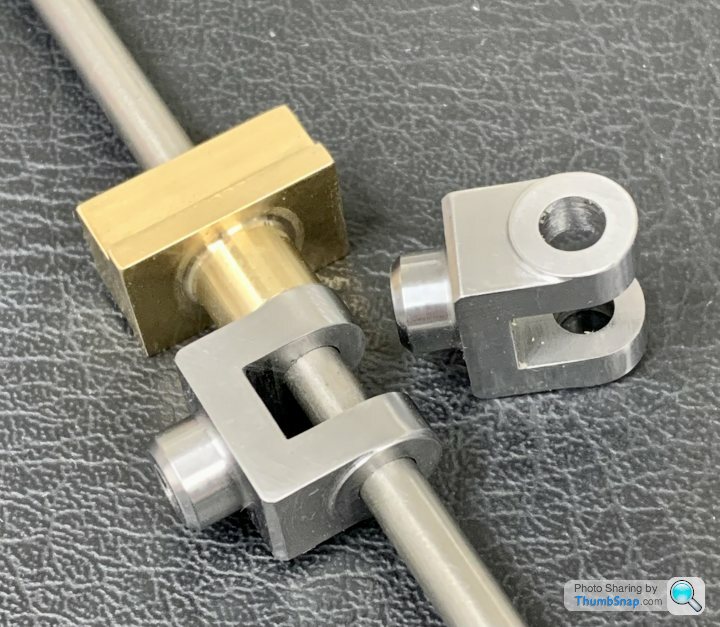
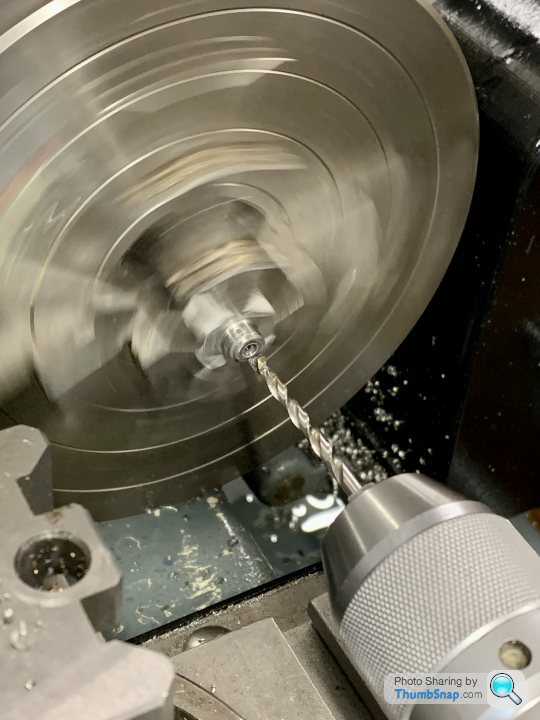
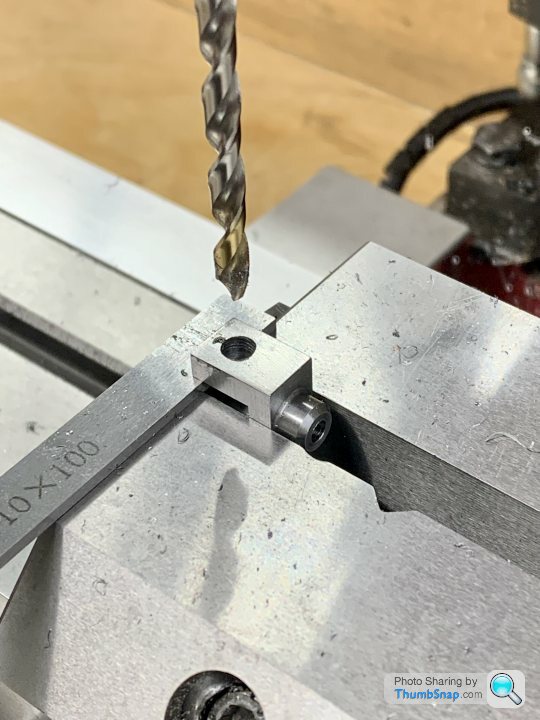
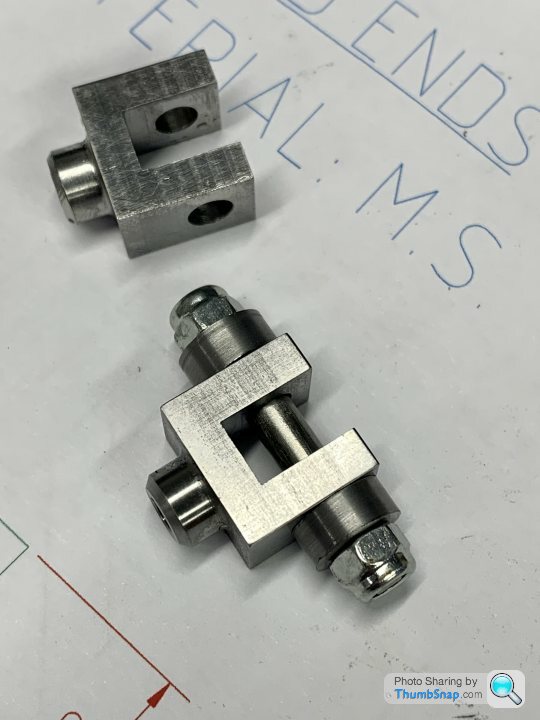
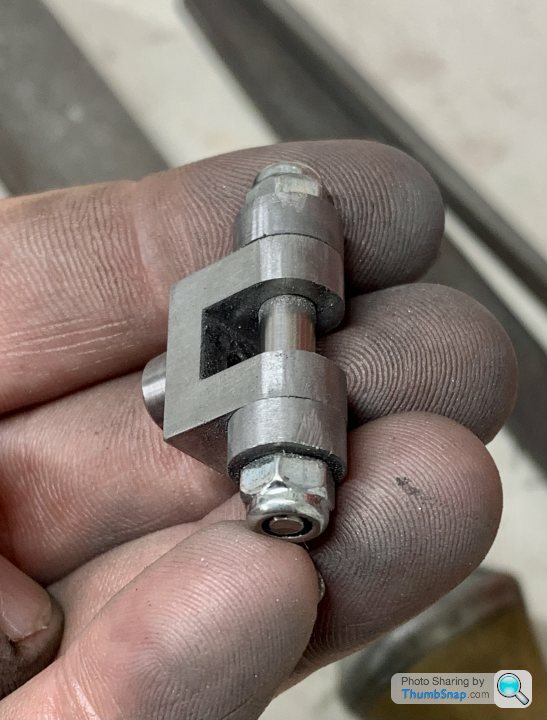
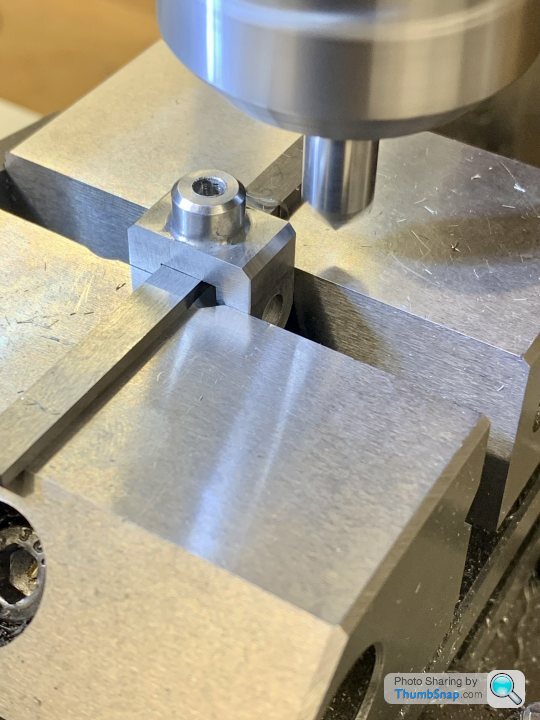
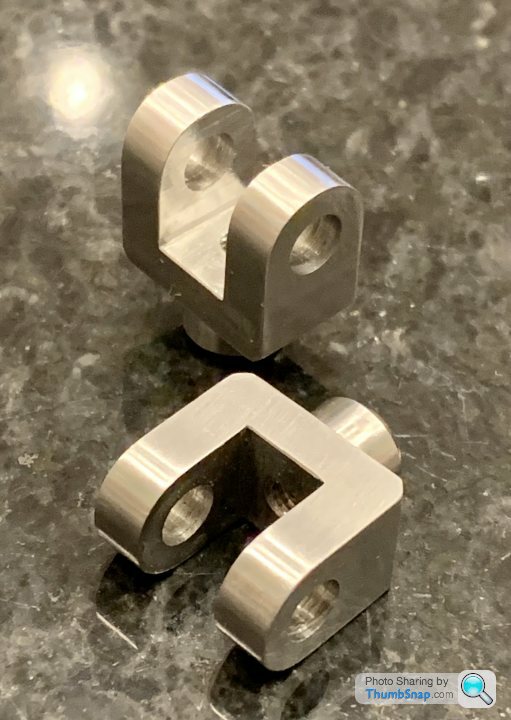
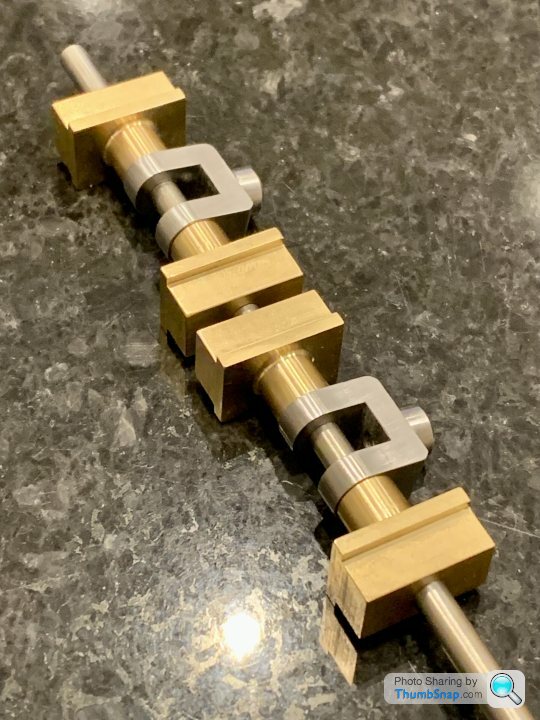
 . I’ve already got a reamer and some 5mm stainless rod. Seems par for the course for me these days to end up correcting something, so no big deal.
. I’ve already got a reamer and some 5mm stainless rod. Seems par for the course for me these days to end up correcting something, so no big deal.








 Register
Register Log-in
Log-in


